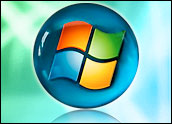
Costco and Sam’s Club arerationing rice. Friday’s reported incident in the Persian Gulf probably has more than a few individuals of a paranoid persuasion stocking up on gasoline. And to top it all off, Microsoft’s cutoff date for Windows XP is coming in two months, a decision that’s left over 165,000 fans of the OS so upset that they were willing to devote a full three seconds of their lives to sign an online petition to save XP.
Will there be riots? Hoarding? Denial of service attacks on Microsoft’s internal IT network and an armed assault on theGates Technodrome?
For a time, it seemed Microsoft was taking twisted pleasure in watching XP lovers in pain. This week CEO Steve Ballmer said the company wouldmaybe, possibly, conceivably keep XP alive a while longer. Later, a Microsoft PR rep poked her head out and essentially said,“Just kidding!”
The Long Road to Vista
Microsoft has its own reasons for trying to shove along the march to Vista as forcefully as it can, but that may not necessarily mean its hardware partners have to play along. Some big computer vendors have plans to supply customers with XP despite Microsoft’s intention of leaving it behind. Dell, in fact, has reportedlypromised to keep shipping some PCs with preinstalled XP until 2010, around the time Windows 7, Vista’s successor, is scheduled to come out. Shipping XP preinstalled is exactly what Microsoft’s June 30 deadline forbids. Dell’s doing it anyway.
It’s not the only computer maker out to keep XP breathing. Vendors likeLenovo and HP are also offering, and will apparently continue to offer after the deadline, an XP downgrade to buyers of certain computers running certain versions of Vista. For most of these computers, however, the downgrade will be a do-it-yourself project for the buyer. They’ll get a disc that will knock Vista back to its ancestor OS.
Backtracking won’t be an option for all versions of Vista. Technically, only purchasers of the most expensive versions, Ultimate and Business, have the legal right to a licensed backtrack disc. Granted, the resistance to Vista is strongest among business users, a group of people who probably wouldn’t have been buying the more basic versions of Vista even if they liked it.
‘Statistical Truth’
In any case, getting a new computer running XP after June 30 will be something of a runaround. If buyers aren’t actively downgrading the system themselves, they’re letting the vendor first install the newer OS and then turn around and revert back to an operating system that predates the euro, instead of just loading XP onto the machine as it comes off the assembly line.
This week, Ballmer commented that it’s a “statistical truth” that most people who buy new computers today buy them with Vista. That’s pretty obvious — nearly every PC on the shelves at major retailers comes with Vista, and a lot of direct-sale vendors make it a bit of a chore to get XP on a new machine, even though Microsoft’s deadline hasn’t yet come. Microsoft’s latest OS will likely appear on the majority of new computers for as long as Microsoft keeps its dominant share of the computer market. These vendors’ plans to keep XP alive won’t do a thing to change it, since all these reverted-to-XP machines will have technically started their lives as Vista-running computers.
The various incompatibilities and annoyances Vista rained when it was first released were enough of an embarrassment. But stubbornly insisting that the technology world into which Microsoft is so firmly entrenched move on to a system so many people simply do not like is pushy and does the company’s image no favors. And I imagine it makes a few IT professionals a bit uncomfortable to hear Ballmer describe Vista — the system to which they’re being shoved — as“a work in progress.”
Click here to e-mail Paul Hartsock.





















































